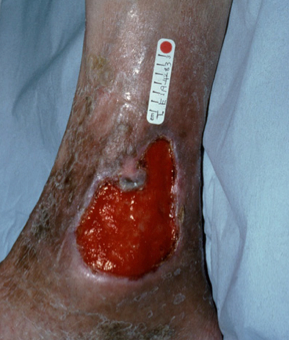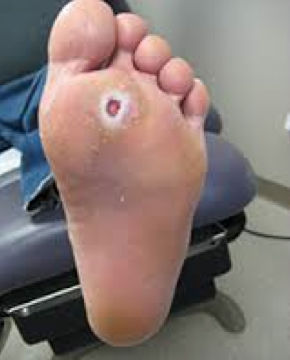A leg ulcer is an open wound that is resistant to healing and persists for an unduly long time.
Most leg ulcers are due to an abnormality of the circulation.
Venous ulcers are the most common. They develop when the pressure in the veins near the ankle is higher than normal.
Arterial ulcers develop when there is poor blood supply to the lower leg or foot, due to blockages in the leg arteries.
There are other less common causes too:
Sometimes several factors act together.
Accurate diagnosis of the cause of leg ulceration is the cornerstone of treatment, because leg ulcers with different causes need different treatment.
Clinical assessment and Tests for the various causes of ulceration aid diagnosis. Ultrasound and a Wound swab are often done. An angiogram may be needed to diagnose arterial disease and a biopsy may be needed for longstanding ulcers or if a skin tumour is suspected.
The aim of treatment is to facilitate healing. Pain usually resolves after healing has occurred.
Treatment is directed at the leg ulcer itself, and where possible, at improvement of the underlying cause of ulceration.
Treatment of the leg ulcer involves:
A schedule for dressings must be set, and particular dressings decided on.
Treatment of the underlying cause may include:
The treatment of leg ulcers can at times be demanding for both the Surgeon and the Patient. The Surgeon must create reasonable expectations and sometimes the Patient must be understanding of the challenge.
Working Together gets the best results.



 Menu
Menu







